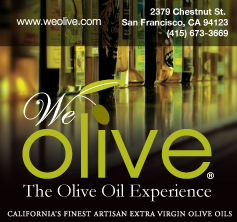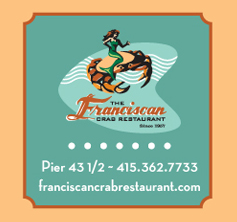Arguably the most lived-in room, the kitchen is often a focal point of many homes. With the high
cost of real estate in the Bay Area, even in a downturned housing market, many homeowners are choosing to invest in remodeling instead of upgrading to a new home. If you are thinking of a complete kitchen overhaul or just a cosmetic facelift, here are some considerations.
Style
Your kitchen style should reflect your lifestyle – the lifestyle you actually have, not the one you wish you had. Also consider the architecture of your house so that any remodeling maintains continuity with the rest of your home.
Not sure of your style? Flip through some home magazines and books and start a file. Eventually your style will emerge as you collect pictures of kitchens that attract your eye.
Budget
Set a realistic budget and identify areas where you have cost options so you can stay within your budget. Consider labor costs as well as materials costs.
Appliances
If you are upgrading your appliances, this can be a major expense. Assess your cooking lifestyle to help you make choices: Do you entertain frequently? Do you enjoy cooking and baking? Look for reliable, quality, energy-efficient models with service protections.
The work triangle
When designing your kitchen layout, consider the work triangle connecting your refrigerator, range and sink. These are the most traveled distances in a kitchen, and a single leg should be between four and nine feet, with the sum of these lines between 23 and 26 feet.
Cabinets and storage
If your existing cabinet space is sufficient, consider refinishing the faces instead of replacing them altogether.
Standard modular or premanufactured cabinets run in 3-inch increments, starting at 9 inches up through 36 inches. There are generally four basic types of cabinets, with many variations:
• Standard base: one drawer with a door and shelves below
• Drawer-based: three or four stacked drawers
• Sink-based: open at the bottom with a door below a single false drawer front
• Corner-based: may have a lazy Susan inside for convenience
Lighting
Long gone are the days when kitchens were designed with one searing overhead light fixture. Your lighting should be complementary as well as functional. There are four types of lighting to include in your new kitchen design:
• Task: focuses on the areas where you will perform work like food preparation and cleanup
• Accent: highlights artwork, special room features or inside cabinets, and adds overall dimension
• Ambient: provides a soft, warm glow from pendant lights, track lighting or ceiling fixtures
• Decorative: adds style and flair in the form of sconces, chandeliers or lamps
Tile and countertops
Countertops range in materials from marble, granite, limestone, or soapstone to engineered stone or quartz, each with advantages and disadvantages. Engineered stone or quartz is durable and low maintenance, but has size limitations and a uniform appearance. Limestone absorbs some food stains, but is unique and natural looking. Granite, while heat and scratch resistant, requires regular sealing.
Well-chosen tile can add continuity and style, and there are many shapes, designs, colors and materials (including recycled) to choose from such as ceramic, glass, natural stone, and even metal to complement stainless appliances.
Flooring
There are also many flooring options, including hardwood, prefinished wood, laminate, vinyl, and tile. Refinishing an existing hardwood floor is always a greener, less expensive option; however, if you need to replace your flooring and want wood, consider bamboo and cork, two popular renewable resources, with bamboo as durable as most hardwoods. Stone tile, while also durable and low-maintenance, may chip and cause fatigue after long periods of standing.
Color
Test out different colors with paint samples before you commit to one. Fortunately, should you choose the wrong shade, this is one area that you can inexpensively fix. Choose a zero-VOC paint such as Benjamin Moore’s Natura line.
Remodeling can be fun if you do your homework, keep to your budget, and remain flexible when you may need to compromise.
See you around the house! E-mail: julia@northsidesf.com
Around the House with Julia
Kitchen remodel considerations
Kitchen remodel considerations








